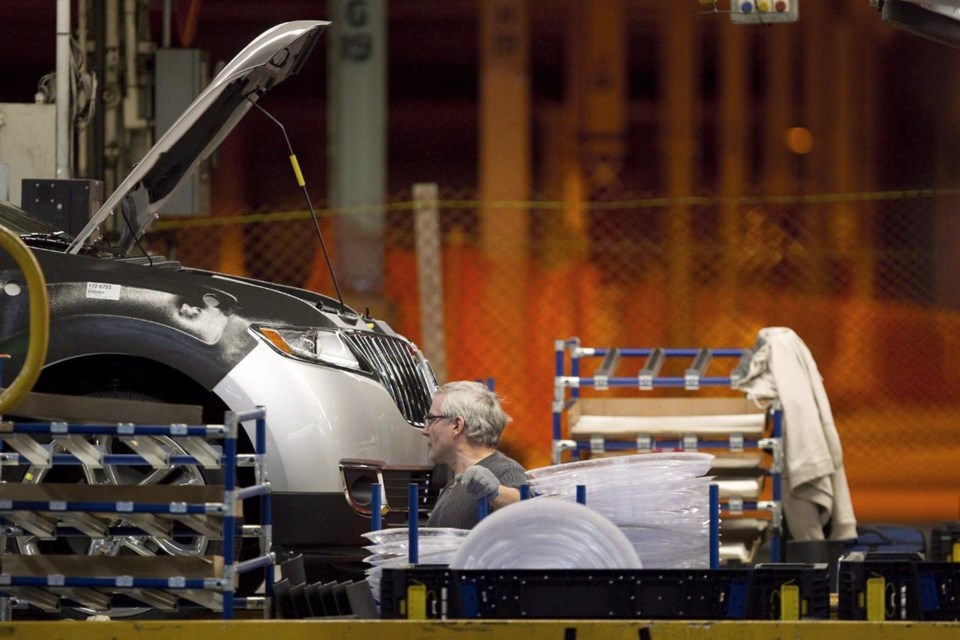OAKVILLE, Ont. ŌĆö Ford Motor Co. has revealed some details of its plan to spend $1.8 billion on its Oakville Assembly Complex to turn it into an electric vehicle production hub in the latest commitment by an automaker transitioning towards an electric future.
The automaker said Tuesday that it will start retooling the Ontario complex in the second quarter of 2024 and begin producing electric vehicles in 2025.
The transformation of the Oakville site, to be renamed the Oakville Electric Vehicle Complex, will include a new 407,000 square-foot battery plant where parts produced at Ford's U.S. operations will be assembled into battery packs.
General Motors is already producing electric delivery vans in sa╣·╝╩┤½├Į, but Ford says this is the first time a full-line automaker has announced plans to produce passenger EVs in sa╣·╝╩┤½├Į for the North American market.
GM said in February it plans to build motors for electric vehicles at its St. Catharines, Ont. propulsion plant. The motors will go into its BrightDrop electric delivery vans, which it produces in part at its Ingersoll, Ont. plant, as well as its electric pickup trucks, producing enough at the plant for 400,000 vehicles a year.
Ford's announcement is the latest commitment by an automaker transitioning towards an electric future.
"sa╣·╝╩┤½├Į and the Oakville complex will play a vital role in our Ford Plus transformation," said chief executive Jim Farley in a statement.
The company has committed to invest over US$50 billion in electric vehicles globally and has a target of producing two million EVs a year by the end of 2026 as part of its Ford Plus growth plan.
Ford didn't specify in the release which models it planned to build at the Oakville complex, which currently produces the Ford Edge and Lincoln Nautilus.
The company's spending plans were first announced in 2020 as part of union negotiations, with workers seeking long-term production commitments and the Detroit Three automakers eventually agreeing to invest in Canadian operations in concert with spending agreements with the Ontario and federal governments.
The two governments agreed to provide $295 million each in funding to secure the Ford investment.
"The partnership between Ford and sa╣·╝╩┤½├Į helps to position us as a global leader in the EV supply chain for decades to come,ŌĆØ said Industry Minister Fran├¦ois-Philippe Champagne in Ford's news release.
Funding help comes as the federal government moves to require that at least 20 percent of new vehicles sold in sa╣·╝╩┤½├Į will be zero-emission by 2026, at least 60 per cent by 2030, and 100 per cent by 2035.
The Ford spending commitment is just one of many seen in sa╣·╝╩┤½├Į in recent years, most recently with Volkswagen announcing in March it would build its first battery cell plant outside of Europe at a plant in St. Thomas, Ont. The federal government has not yet said how much money it committed to secure the Volkswagen investment.┬Ā
Stellantis and LG Energy Solution have also committed to spending more than $5 billion to build an EV battery plant in Windsor, Ont., while Stellantis is also spending $3.6 billion on its Windsor and Brampton, Ont. plants to prepare them for both electric and conventional auto production.
Unifor president Lana Payne welcomed the news in a statement.
"Assembling batteries at the retooled plant means more jobs for Canadian autoworkers and ultimately a more sustainable plant," she said.┬Ā
"These jobs are essential to a thriving auto sector and our union will continue to advocate for a comprehensive EV transition at every opportunity."
This report by The Canadian Press was first published April 11, 2023.
The Canadian Press



